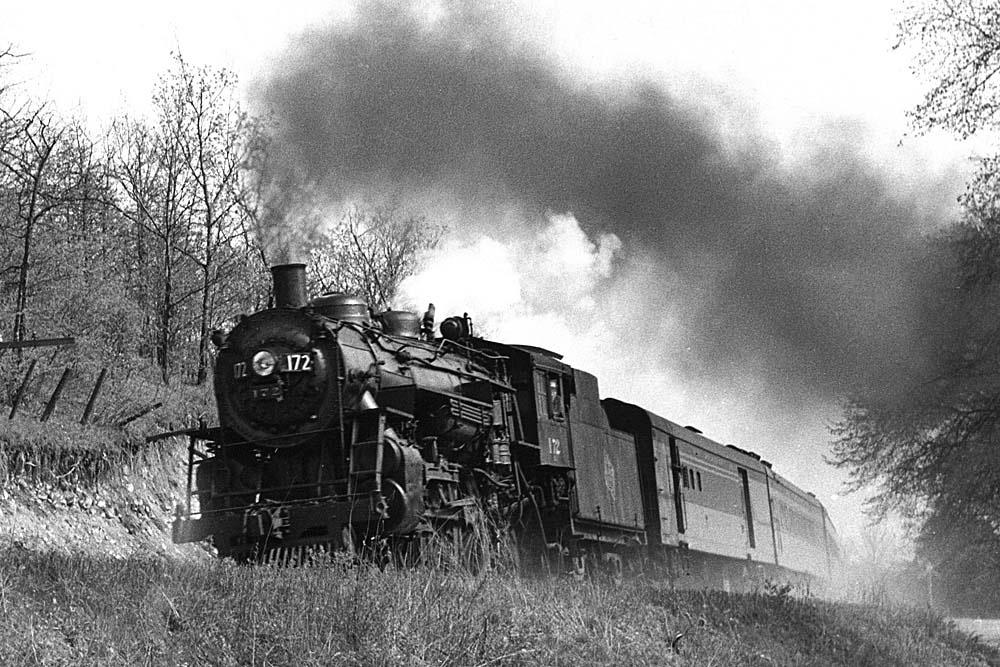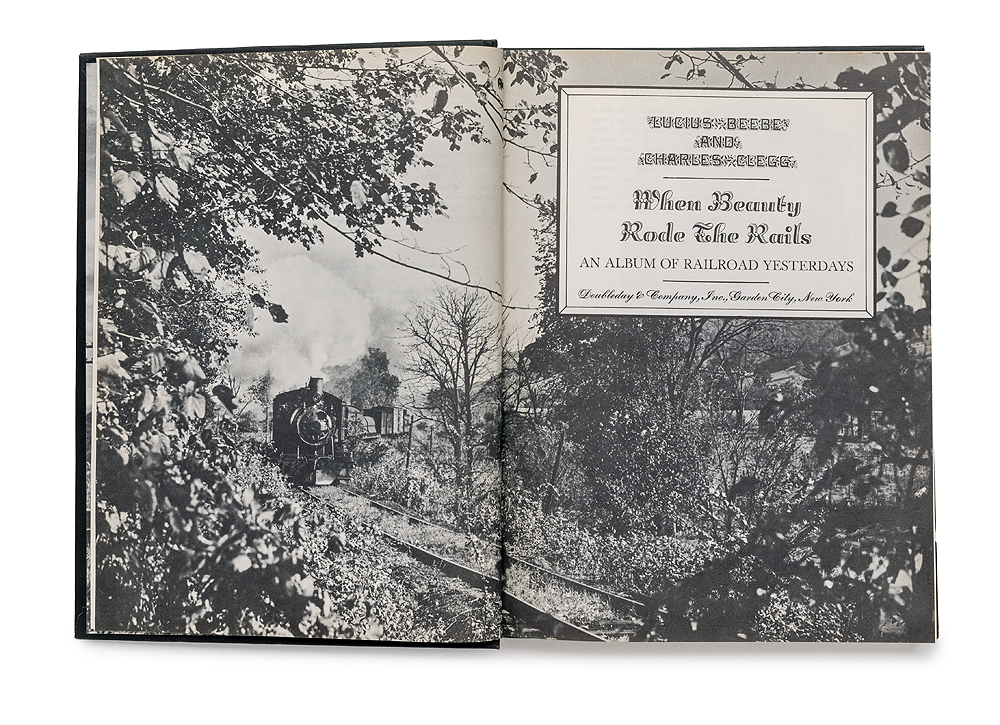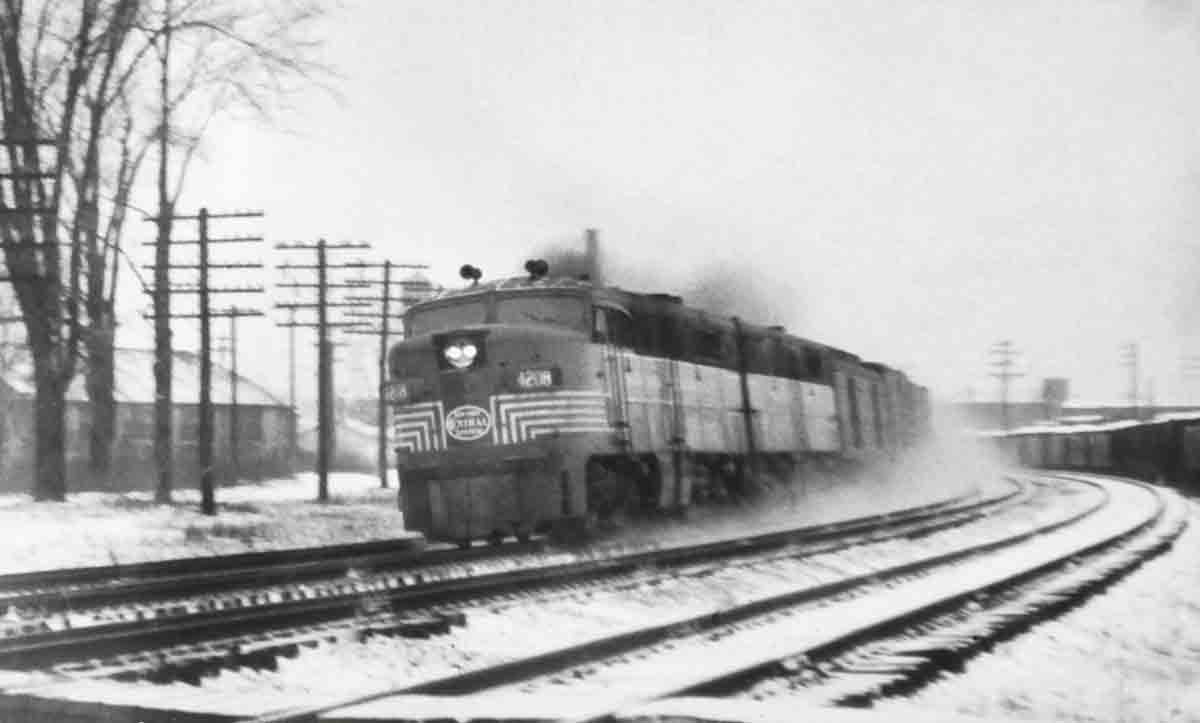In June 1949, my friend Bob Wagner and I decided to head from our Los Angels-area homes for the Owens Valley in eastern central California to see, and hopefully ride, Southern Pacific’s former Carson & Colorado narrow gauge, which still operated with steam power 70 miles between Keeler and Laws.
We got a late start in the evening and stopped to eat in Mojave, then continued north to Olancha, where we turned northeast on a dark secondary paved road. There was no other traffic, and the only thing we could see was a single light way off in the distance. Eventually we reached the road that would lead us to Keeler, and in the due time we arrived at the southern terminus of the narrow gauge.
Our arrival started every dog in town barking, and we discovered that the solitary light we had been seeing ever since we left Olancha was right where the engines were parked – a perfect beacon to guide us to our destination. It was a hot night in Keeler so we opened all four doors of Bob’s sedan. Bob stretched out as best he could on the back seat, and I did the same on the front seat.
The next thing we knew, it was daylight, and the train and engine crew, as well as the section gang, were getting ready for their day’s work. We introduced ourselves to the train crew and asked about riding. Fortunately, the train was going all the way to Laws that day. The conductor asked if we had any food, and when we replied in the negative, he told us to go down the road about three houses and knock on the back window and wake up the occupant, who ran the general store in front of the building, and ask him to sell us some grub.
We did, and he did, and when we returned to the train with our grubstake, the conductor told us we could keep our perishable food in the icebox in car 401, the combine that served as a caboose. Since it was going to be hot day, the conductor suggested we ride the engine as far as Owenyo, before it came too hot. Engine 18 was our power that day. It and line’s other two engines, 8 and 9, were all Baldwin Ten-Wheelers.
After the crew had made up the train, we were soon on our way north with an assortment of diminutive freight cars and the combine. As we rolled along at a leisurely pace, the engineer and fireman would point out items of interest. To our right looked the Inyo Mountains. To our left was the flat width of Owens Valley, then the low and interesting Alabama Hills (where many Western movies were filmed), and beyond were the high peaks of the Sierra Nevada range, one of which was Mount Whitney, highest peak in the 48 states. All the higher peaks were snow-covered. It was certainly a magnificent sight, with a cloudless blue sky above.
The C&C was built along the eastern side of Owens Valley, while the highway, which came later, and all the towns, were on the western side. So we were a lonely little train in a big and lonely valley. For the most part, the track was straight. Every so often, we’d come to a spur track where cars might be set out or picked up. Mining products were about the only business the railroad handled on its southern end, but farther north, livestock was shipped in season. All commodities were transferred to standard-gauge cars at Owenyo.
Upon arrival at Owenyo, we thanked the engine crew for the great ride in their cab, and looked around this very interesting place, including the interior of the depot. Outside, we watched our engine switching cars and noted the transfer trestle, where narrow-gauge cars could be pushed up above a standard-gauge track so that bottom-dump narrow-gauge cars’ loads could be unloaded directly into standard-gauge open-top cars.
Someone told us that it took the contents of three narrow-gauge cars to fill one standard-gauge car. The track layout at Owenyo ran north-south. All narrow-gauge tracks were on the east side of the yard, and all standard-gauge tracks were on the west side. There was no three-rail dual-gauge trackage.
Upon completion of their work at Owenyo, the train crew and Bob and I boarded combine 40, the engineer whistled off, and we were once again on our way north.
Slowly the miles slid by, and after a while we arrived at Aberdeen, where there was a water tank and a windmill. The conductor announced this would be our meal stop, so Bob and I took our lunch from the icebox, and sat down under the water tank, where it was cool from water dripping form the tank. It was like being inside a giant swap cooler as we ate our lunch.
Since the crew was going to take an hour for lunch, Bob and I, after eating, climbed up on the boxcar ahead of the combine and walked forward from car to car along the roofwalks on the boxcars. This was an experience in itself!
Following lunch, our train continued north, mile after mile, occasionally stopping at a spur to do some switching. Gradually, the bleak desert terrain gave way to agricultural land, which for us was a welcome change.
Eventually we arrived at Laws, and we helped the crew turn No. 18 on the Armstrong gallows-type turntable. The engine crew took water after a lot of switching moves had been completed. The crew and Bob and I then ate dinner at a local beanery, after which it was time to head back to Keeler. Since it was very hot, the conductor suggested Bob and I wait until the sun had set, then climb up on the roof of the combine and enjoy a nice cool ride through the evening.
So that’s what we did, and it turned out to be the greatest part of our ride. As on the northbound trip, we stopped to do some switching from time to time. The most memorable of these stops was at Kearsarge, where the long-closed depot stood silently in the light of the moon, which had risen from behind the Inyo Mountains. During the switching moves, the engineer would sometimes blow 18’s whistle, and its echo would come floating back from the mountains several seconds later, which made the hair on our necks stand up and gave us goose bumps. What an Experience! If only we had had some way to record this sight and sound!
We saw and heard some of this magic again at Owenyo. And after we left, we could look back and see the light in the train-order semaphore for miles and miles.
All too soon we arrived back in Keeler, just before the train crew would “die on the law,” which back then was 16 hours. They had gone on duty at 6 a.m., and would reach the maximum hours of service at 10 p.m.
It was just another day for the friendly crew, but for Bob and me, it had been like going through a time warp back into the 1880’s. For two young railfans, it was truly a trip of a lifetime!












